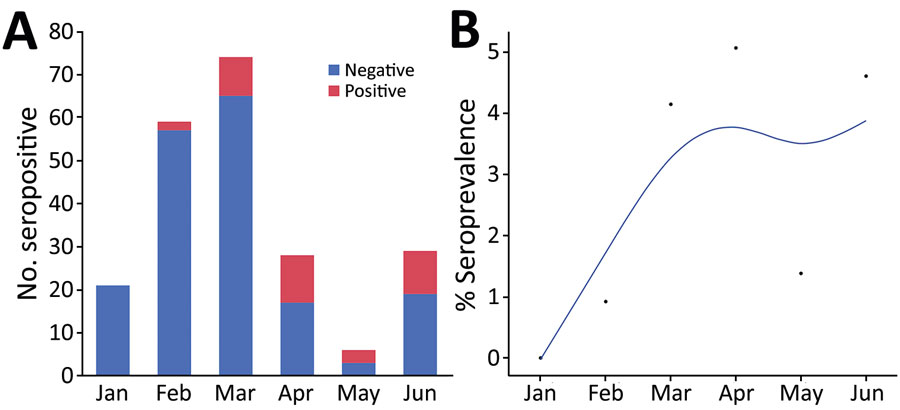Volume 28, Number 6—June 2022
Research
Risk Factors for SARS-CoV-2 Infection and Illness in Cats and Dogs1
Figure 1

Figure 1. Seropositivity for SARS-CoV-2 in cats brought for care to a low-cost spay/neuter clinic during January – June 2021, Ontario, Canada. A) Test results for 221 cats shown by month. B) Positivity rate per month. The points indicate the proportion of positive test results among all test results over time. Blue line indicates the smoothed rate of seropositivity. The association between month and the change in seropositivity was significant (p<0.0001).
1Preliminary results from this study were presented at the 30th (September 23–25, 2020) and 31st (July 9–12, 2021) European Congress of Clinical Microbiology and Infectious Diseases.
Page created: April 28, 2022
Page updated: May 22, 2022
Page reviewed: May 22, 2022
The conclusions, findings, and opinions expressed by authors contributing to this journal do not necessarily reflect the official position of the U.S. Department of Health and Human Services, the Public Health Service, the Centers for Disease Control and Prevention, or the authors' affiliated institutions. Use of trade names is for identification only and does not imply endorsement by any of the groups named above.